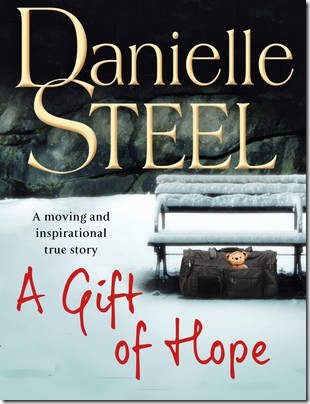 Danielle Steel is one of today’s best-known fiction authors, having written 85 novels that have sold more than 590 million copies.
Danielle Steel is one of today’s best-known fiction authors, having written 85 novels that have sold more than 590 million copies.
But hardly anyone knew that for more than a decade Steel and a small band of supporters were quietly and anonymously giving sleeping bags and winter jackets to homeless people in San Francisco.
The program began after Steel’s 19-year-old son committed suicide and her marriage disintegrated, leaving her to raise their eight other children. Soon after this double trauma she was in church praying for guidance when a persistent thought popped into her head: “Help the homeless.”
She reacted with fear, but agreed to try it for one night. She and a few friends stuffed sleeping bags, jackets, socks and gloves into a van and set out to find the homeless.
At the end of that first evening they encountered a 21-year-old woman who had just started chemotherapy for cancer and was living with her mother outside on a piece of cardboard, afraid of the violence they might encounter in a shelter. Their plight touched Steel deeply and persuaded her to continue the program.
Steel’s outreach expanded to the point that she and 10 other volunteers, including four off-duty police officers, would go out once a month on cold nights in four vans crammed with up to 300 sleeping bags and other supplies. They searched for homeless men and women in alleys and under overpasses.
Invariably, the homeless were surprised and grateful. Each homeless person would be handed a plastic bag stuffed with a rain poncho, a scarf, a waterproof tarp, a flashlight, eating utensils, soap, peanut butter, and of course, a new sleeping bag and jacket.
One year before Christmas, Steel decided to hand each homeless person a stuffed teddy bear, not knowing how people would react. The gesture proved to be a hit with “huge, tough-looking men … clutching their bears, naming them, holding them and exclaiming in delight and astonishment.”
One cannot help but admire Steel’s dedication, but her analysis of homelessness as a social issue is superficial at best.
According to Steel, 80 to 90 percent of the homeless are mentally ill, a dubious fig ure. She proposes that laws be changed to permit hospitalization of mentally ill homeless people without their consent, a move that would surely raise civil liberties concerns.
ure. She proposes that laws be changed to permit hospitalization of mentally ill homeless people without their consent, a move that would surely raise civil liberties concerns.
Probably the book’s biggest failing is that we are given only a general impression of the homeless, who come across, with a few exceptions, as stick figures. We learn little about their lives before they became homeless. That’s a pity, because one of Steel’s goals is to persuade readers to take an interest in the homeless.
She never asked anyone about the circumstances that led to their being homeless out of respect for their privacy, but that sounds like an excuse. Surely she could have brought up the subject without naming anyone, which would have helped readers gain a deeper understanding of the problem.
She says that only one person ever volunteered information about his circumstances. A man dressed in a business suit said he had been a Silicon Valley executive, but had gone deeply into debt and lost everything, including his wife and job. He was looking for work while living outdoors.
Steel criticizes cutbacks in government programs, but is vague on details. She says Philadelphia is reputed to have the best program in the nation for dealing with homelessness, but drops the subject by saying she has no direct knowledge of it. Perhaps she could have made a few phone calls to find out.
Reading between the lines, the real message of this book may be that homelessness is a complex issue. There is no single reason why people become homeless and no simple fix.
Steel’s admirable dedication to giving sleeping bags and coats to shivering clients on cold, rainy winter nights, although not a solution, offers succor and hope to people who sometimes must wonder if anyone knows they exist.
For 11 years Steel funded the San Francisco program out of her own pocket. She does not say how much it cost her, but it must have been a considerable sum. She dreams of finding a new source of revenue and going back to the streets. “The need is there, greater than ever,” she writes.
But she is ambivalent, adding at the end, “Maybe we were meant to stop when we did, for whatever reason.”
A Gift of Hope: Helping the Homeless, bv Danielle Steel; Delacorte Press, 128 pp., $20
Bill Williams is a free-lance writer in West Hartford, Conn., and a former editorial writer for The Hartford Courant. He is a member of the National Book Critics Circle and can be reached at billwaw@comcast.net.